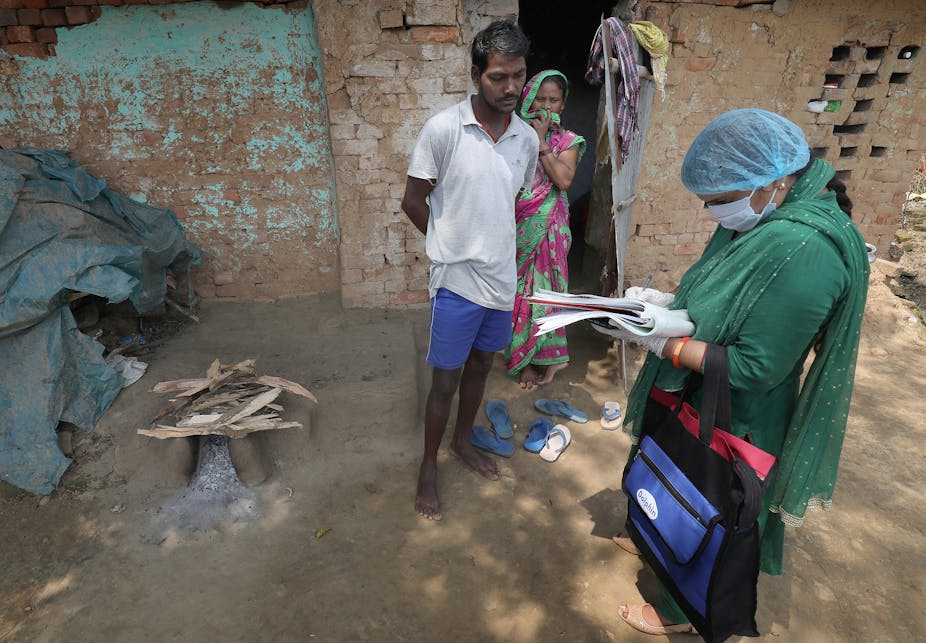Worldwide, tuberculosis (TB) remains a significant cause of disease and deaths. Around 9.9 million people had the disease in 2020. The burden is higher in low- and middle-income countries. Africa accounts for 25% of TB cases.
TB is caused by a bacterium called Mycobacterium tuberculosis. Not everyone who gets infected with the bacterium will get sick. Once infected, a person has a 5%-15% lifetime risk of developing active TB disease. Risk factors that contribute to people’s susceptibility to getting ill with TB include HIV infection, diabetes mellitus, malnutrition, alcoholism and rheumatoid arthritis.
Based on my experience of researching and being involved in TB programmes in Africa over the past two decades I would argue that TB control should take a leaf out of the approach adopted for HIV.
In the HIV care field, the current UNAIDS strategy is to “test and treat”. This approach involves widespread, community-based HIV testing. People testing positive for HIV are immediately placed on antiretroviral therapy.
This strategy has two key benefits: protection from HIV infected persons progressing to AIDS, and a lowered risk of infecting others. This, in turn, will decrease the global HIV burden, and lead to improved health of the infected persons and less transmission to the uninfected.
What if the global TB management community adopted a similar strategy?
Something akin to this is already implemented in high income countries. Many routinely screen immigrants for Mycobacterium tuberculosis infection, and offer preventive treatments to those who test positive. This contributes to less TB disease in these countries.
There are a number of limitations to this strategy. These include the large population vulnerable to infection, the risk of drug resistance, as well as the probability of re-infection. Nevertheless, a ‘test and treat’ approach could – if widely implemented – limit TB disease in low- and middle-income countries.
Current strategies
In high-income countries people at high risk of TB disease undergo screening programmes even when they have no symptoms. Those who test positive for Mycobacterium tuberculosis infection are given preventive treatment for 3-9 months depending on the regimen.
This strategy has contributed to limiting active TB disease.
The idea has been mooted for developing countries, but it has not yet been introduced comprehensively.
In low- and middle-income countries screening for infection and offering preventive medication are limited. These services are mainly promoted for children who have been in contact with an adult with TB disease, as well as people with HIV.
Even this isn’t implemented across the board.
In Africa people are only screened once they show symptoms, such as a cough. Even then there is often a delay in confirming a diagnosis, and sometimes even in initiating appropriate treatment. By the time the person starts any TB treatment, they may have infected a number of other people. This could be in their homes, in schools as well as in work places and social meeting places.
A study done in Uganda showed that the risk of children getting TB infection after exposure to an adult in the home increased with age. With an additional risk factor such as overcrowding, under nutrition and HIV infection, household contacts of a TB patient stand a chance of getting active TB diseases over time.
Limitations
Introducing a ‘test and treat’ approach would seem a logical way to go. There are, however, a number of factors that could make such a strategy difficult:
Firstly, the populations at risk are large and the testing and treatment programmes are not easily affordable for many governments in Africa. This is true of HIV too. But those tackling HIV have nevertheless moved towards a global test and treat strategy.
Secondly, the drugs used for TB prevention are the same ones used for treatment. If the “healthy persons” offered TB preventive treatment do not take their medicines diligently it would promote drug resistance, with disastrous consequences for the treatment of those with TB disease.
Thirdly, if a person takes medication for tuberculosis preventive treatment, (usually 1 or 2 types of pills), when they are in early stages of unnoticed tuberculosis disease which requires 4 types of pills, this may inadvertently lead to suboptimal treatment of the early tuberculosis disease, with risk of negative consequences to the person due to inadequate treatment, and to others with TB disease in the long run due to “drug resistance”.
Fourthly, there is a risk of a person who has been given TB preventive treatment being reinfected, thus potentially requiring repeat preventive medication. But again we need to learn from the HIV community, where this has not hindered them in the test and treat strategy.
Despite these challenges I believe there is nevertheless merit in considering the “test and treat strategy” towards global TB control. But this would need the concerted effort of all players.

